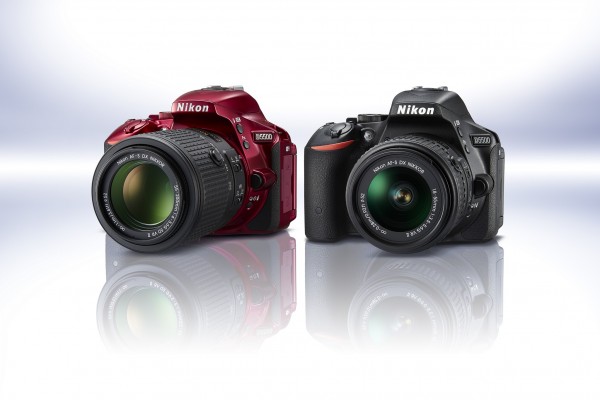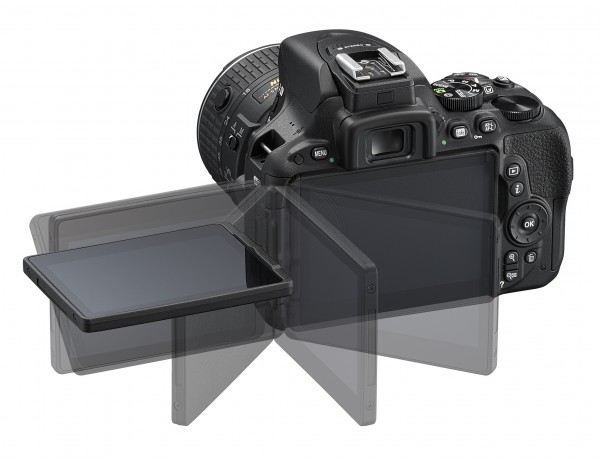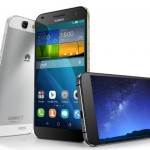
With so many types of cameras targeting newcomers to photography, Nikon’s latest D5500 certainly has some serious work cut out for it.
Touted as the smallest, lightest and slimmest Digital SLR camera, it can easily been seen as a response to the slew of mirrorless cameras. The smaller rivals do not have to contend with the bulkiness of an SLR camera’s mirror box, which houses a mirror to reflect the image onto the optical view finder.
To appeal to more users, Nikon has managed to shrink the D5500’s size by using a monocoque camera body structure. This is like its more capable sibling, the Nikkon D750 full-frame DSLR camera.
Although the mirror box is still around, the whole camera looks petite, feels well put together and sits pretty comfortably in my right hand, thanks to the deeper hand grip.
The placement of the buttons has also improved and I could get to the settings very much quicker than with previous Nikon models.

There are also some welcome additions such as the variable-angle and touch-enabled screen. With a hinge, it also lets you take simple selfies with a wide-angled lens. Or, if you like, shoot from down low for that dramatic composition.
The other user friendly feature is the Wi-Fi function that enables remote control of the camera via a smartphone app. It allows for quick sharing of photos too, which is perfect for frequent social media users.

Despite the pluses, the camera does have some issues, especially when it comes to usability when shooting pictures.
To change aperture, you have to press the Exposure Value Compensation button (+/-) and flick the rear wheel, which is inconvenient.
Why can’t Nikon make use of the Function (Fn) button housed on the left side of the mirror box, so you can use the left thumb to press it while switching the settings with the right thumb?
Unfortunately, that function (Fn) button doesn’t allow aperture control at all. The other way is to use the touch screen at the back of the camera, but that would need me to pull away from the view finder and lose my subject in the process.

Image quality-wise, the D5500 has certainly improved over its predecessors over the years. With a 24-megapixel CMOS sensor and Expeed 4 image processor, it has basically reached the level of performance of mid-range DSLRs earlier this decade.
The colours from the camera are certainly very punchy and with the right lens, the D5500 can be very sharp as well. Although the kit lens is capable in most cases, a better set of lens is needed to allow the camera to reach its maximum potential.




One of the biggest bugbear for Nikon’s entry-level cameras is the lack of auto-focus when attaching lenses that don’t have their own focusing motors.
This is the same for the D5550. If you fix up a Nikkor 50mm f1.4 D lens, for example, you have to manually find your focus when shooting. So, do consider the price of lenses when you consider the D5500.
The camera itself is priced affordably at S$1,129 for those starting out on the hobby. For that cost, you get the 18-55mm f3.5/-5. VR II DX kit lens. Add S$220 and you get the longer-reaching 18-140mm f/3.5-5.6G ED VR DX lens.
Do note, however, that the D5500 uses the DX sensor format. Currently, the only high-end model in the DX family is the D7200, so you’ll have a limited upgrade path should you wish to improve on the camera body and keep the lenses you have invested to work with the D5500.
The alternative is to go for full-frame DSLR camera bodies such as the Nikon D610 and D750 (close to S$3,000 at launch). But aimed more at more advanced users, they will burst the budget for many who are starting out on the hobby.
Should you consider the D5500, then? If you don’t think you’d upgrade much, then it is a capable camera to start with.
However, if you think you’d go far in your hobby, and desire upgrades in future, it may be worth the extra cost to invest in the higher-end Nikon D610 or D750, or look somewhere else at Canon’s EOS D700, for example.






